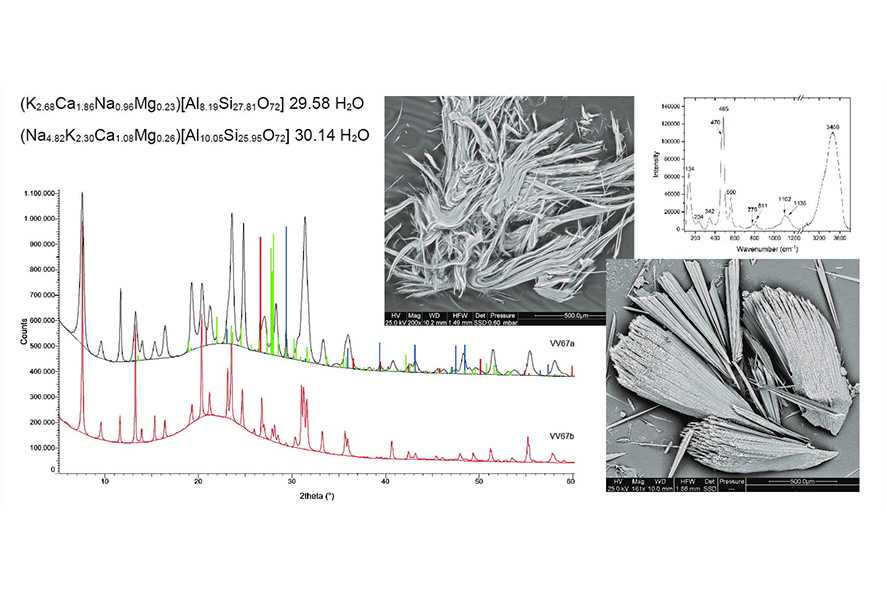First occurrence, crystal-chemistry and structure of erionite, a carcinogenic fibrous zeolite, from the volcanic rocks of Latium (Italy)
DOI:
https://doi.org/10.13133/2239-1002/18084Abstract
This work relates to the occurrence and crystal-chemical characterization of fibrous erionite, a carcinogenic zeolite, discovered for the first time in the volcanic rocks of Latium, Italy. The erionite samples were investigated using SEM, TGA, PXRD, FTIR and Raman spectroscopies. Cell parameters, fractional coordinates and site scattering were refined using the Rietveld method. Two different types of erionite were found, having different crystal morphologies, chemical composition, and structure. The first type is an extremely fibrous erionite-K, with Si/(Si+Al) ratio of 0.77, cell parameters a=13.255 Å, c=15.053 Å and cell volume V=2290.49 Å3. The second type is acicular to highly fibrous erionite-Na, with a lower Si/(Si+Al) ratio (0.72-0.73) and larger cell parameters (a=13.291 Å, c=15.146 Å, cell volume V=2317.35 Å3). Both erionite types occur as fibers of inhalable size. The structure of both samples, refined by the Rietveld method on powder X-ray diffraction data, collected in transmission mode on capillaries, is consistent with that of samples with similar extra-framework cations content. Raman and FTIR data are presented and discussed.
The described finding of potentially carcinogenic erionite in the volcanic rocks of Latium that are typically rich in zeolites of various nature, both as cavity filling and devitrification products of glass, suggests that this hazardous mineral might be more common than previously believed in the area and points to the need for detailed and more systematic studies.

Downloads
Published
Issue
Section
License
Copyright (c) 2023 Periodico di Mineralogia

This work is licensed under a Creative Commons Attribution 4.0 International License.

